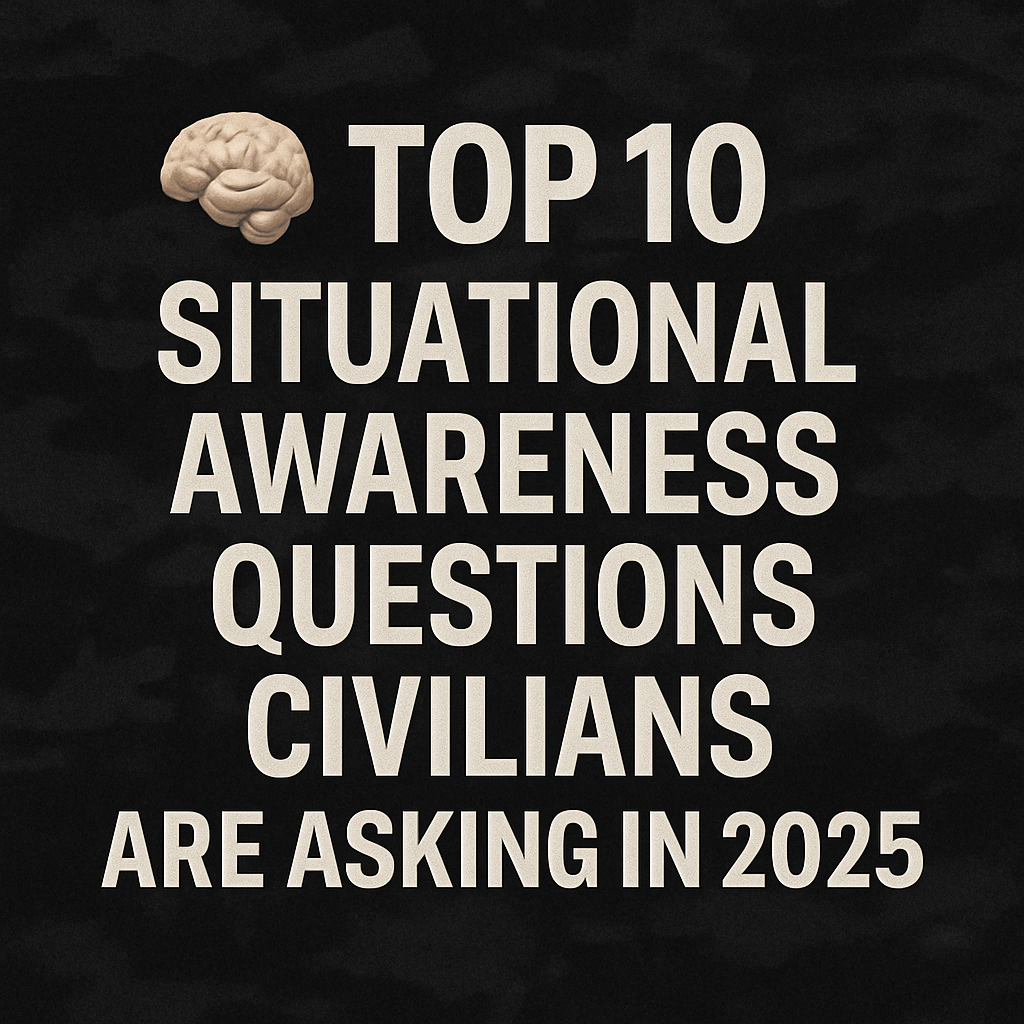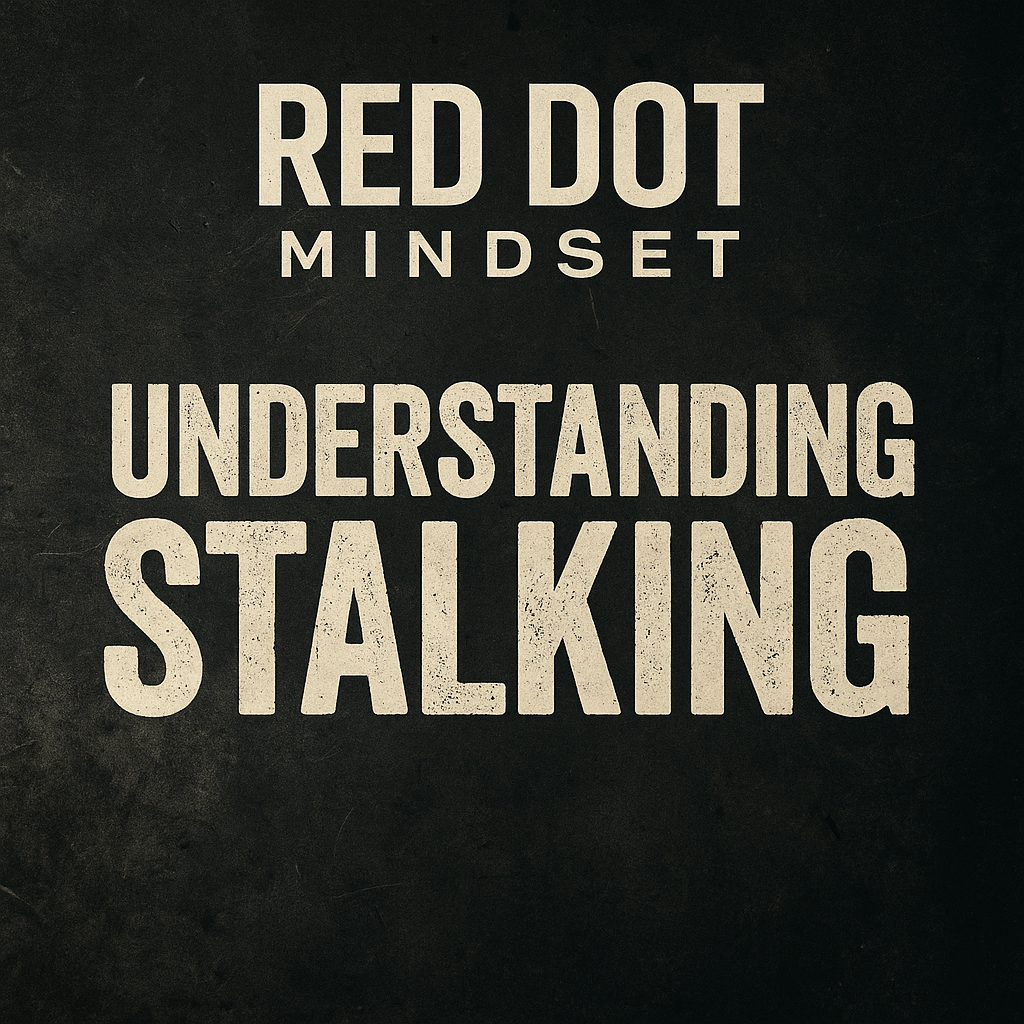Episode Transcript
[00:00:00] Speaker A: Okay, let's picture this. You're in a well lit parking lot. Phone's in your hand.
You've checked the car, locked the doors, the alarm set. You've done everything right, preparation wise.
[00:00:09] Speaker B: All the checks.
[00:00:10] Speaker A: Yeah, all the checks. But then you walk those 30ft to your vehicle and your pulse starts to climb.
There's that, that low hum of anxiety. Why?
Why is that tension still there when logically everything seems secure?
[00:00:27] Speaker B: That feeling, that specific tension you're describing, that's exactly where we need to start this deep dive.
[00:00:32] Speaker A: Okay?
[00:00:32] Speaker B: Because our sources, looking at both statistical analysis and behavioral psychology, they really highlight this fundamental conflict.
[00:00:41] Speaker A: Conflict?
[00:00:42] Speaker B: Yeah. The official FBI stats pulling from 2025 data, they consistently show crime rates, violent and property going down.
[00:00:49] Speaker A: Right.
[00:00:50] Speaker B: Statistically, people are safer than they've been in decades, right?
[00:00:53] Speaker A: The numbers say safer.
[00:00:54] Speaker B: But your emotional reality, that tightness in your chest you mentioned it, hasn't quite caught up with the data, has it?
[00:01:00] Speaker A: No, definitely not. So this deep dive is really about that gap, the space between the numbers and the feeling.
[00:01:05] Speaker B: Precisely. We're focusing today on understanding and then bridging what we're calling the fear gap. That space between the statistical reality on paper and your, let's say, operational emotional readiness on the ground.
[00:01:20] Speaker A: The fear gap.
[00:01:21] Speaker B: And it's a significant gap. Make no mistake. If you just look at the stats, the downward trend for crime in 2025 is, well, pretty clear.
[00:01:30] Speaker A: But perception.
[00:01:31] Speaker B: Ah, perception. That's where it gets tricky. When pollsters ask, almost half the country still feels significant sort of immediate worries, things like car thefts, random assaults, safety in public spaces. The data curve drops.
[00:01:44] Speaker A: And yet your nervous system is basically yelling the opposite.
[00:01:46] Speaker B: Exactly. So here's a quick check for you listening. How many times this week did you maybe automatically check your backseat before getting in the car or scan the shadows a little longer?
Now, that awareness, that action itself, it can be good. Vigilance is important, but why you're doing it matters a lot, right?
[00:02:04] Speaker A: What's the trigger? Yeah, if that feeling, that hyper vigilance is mostly fueled by some viral video, you saw something that happened far away, maybe a national tragedy instead of a genuine local pattern of risk, then that fear gap, it's widening for you.
[00:02:21] Speaker B: That's the core tension right there. We're constantly making decisions where, you know, the objective facts and our biological reactions are out of sync.
[00:02:29] Speaker A: And when they're out of sync, well, decision making gets slow, it gets reactive, and it ends up relying on the worst possible intelligence source. Just pure, unanalyzed fear. Okay, so the Brain's wired for survival, not stats. We get that. How do we start retraining it? We need to get past the symptoms.
[00:02:45] Speaker B: Yeah.
[00:02:46] Speaker A: Identify the actual psychological gears turning underneath.
[00:02:48] Speaker B: That's the mission. Understand the three core mechanisms driving this disconnect. Because once you understand them, you can start to exert some control.
[00:02:55] Speaker A: Control. Yeah.
[00:02:57] Speaker B: And it's fascinating because just knowing the stats isn't enough. As we've said, our survival wiring prioritizes speed and impact way over cold, hard accuracy. Let's break down these three mechanisms keeping the fear gap open.
[00:03:09] Speaker A: All right, let's do it. Mechanism one.
[00:03:10] Speaker B: First one is the availability heuristic.
Think of it like your brain's internal search engine, prioritizing the most dramatic results. High impact, low probability events, they completely dominate memory recall. If something was vivid, shocking, really emotional, it gets filed right at the front. It becomes your go to example of risk, no matter how statistically rare it actually is in your world.
[00:03:35] Speaker A: So why does that vivid memory beat the logical data? Like, I know plane crashes are super rare, but. But the thought of one feels way more urgent than thinking about a car crash, which is much more likely. Why?
[00:03:46] Speaker B: Because your brain equates high vividness with high relevance. The news story about the rare awful event is packed with detail, emotion. That rich, easily accessible memory tells your system, pay attention. This is the real danger. Even when the data, the map, says you're relatively safe, the vivid just overrides the probable.
[00:04:05] Speaker A: Got it. The vivid sticks. What's the second mechanism that ties into the second one? Negativity bias and media saturation. We're basically hardwired to pay more attention to bad news. Evolutionarily ignoring a potential threat could mean death. Survival instinct, right?
[00:04:19] Speaker B: But today, that instinct gets hijacked. We are just flooded. 247 dangerous stories, a national tragedy. Some shocking crime from across the country feels local and immediate. Because of how fast media travels, that constant drip, drip, drip saturates your perception of baseline risk.
[00:04:37] Speaker A: So we took a useful survival tool, spotting danger, and kind of weaponized it against ourselves with this constant media flood. You could put it that way, yeah. And that constant saturation, it fuels the third mechanism. Social contagion of fear. Social contagion.
[00:04:50] Speaker B: It's simple human mirroring, really. When people around you are broadcasting vigilance, they're tense, jumpy, constantly warning about things. You start to mirror it. Seeing fear makes you feel fear. It reinforces the idea that the threat is real, local, imminent, even if there's no direct evidence right in front of you.
Wow. Okay, so that cycle of Vivid memory, media saturation, social mirroring. That's what keeps the fear gap wide open. So how do we start taking it apart? Like, ask yourself, when was the last time you changed your route home? Or maybe avoided a place because of a story you saw online? Not something that happened to you, but something you saw happen somewhere else? That's the availability heuristic. Demanding the controls right there.
[00:05:31] Speaker A: We need to shut that down.
[00:05:32] Speaker B: Exactly. And to do that, we use a couple of simple conceptual tools. Think of them as ways to help your brain sort the fast emotional signals from the slow, rational ones.
[00:05:42] Speaker A: Tools. Okay, I like tools.
[00:05:43] Speaker B: Good. So picture two things in your head. First, there's the radar. It's fast, it's loud. It's purely emotional.
This is your amygdala, that little almond shaped part of the brain firing off threat responses, grabbing those high impact memories. The radar basically screams danger. React now and now.
[00:06:01] Speaker A: Okay. Fast, loud, emotional. Got it. What's the second tool?
[00:06:05] Speaker B: The second is the map. The map is slow. It's deliberate. It's data driven. This is your prefrontal cortex, where you analyze, weigh consequences, look at the context, Plan your moves. The map says, hang on, assess the terrain. What's the actual situation? Choose the smart path.
[00:06:19] Speaker A: Right.
[00:06:19] Speaker B: RADO SCREAMS Map assesses. So the instruction here, for you, listening, is critical. Do not let the radar run the mission. Always consult the map first. Every time. Every single time. When you feel that anxiety spike, that gut reaction demanding you do something immediately, you need to ask yourself that diagnostic question. Radar or map, which one is in command right now? Because the radar, the amygdala. It's really only good for immediate reflexive responses to a known sudden threat. Think ambush, alarm. But for making calculated decisions about how you move through your day and navigate your environment, that power must belong to the prefrontal cortex, to the map. You have to consciously, deliberately shift control away from that purely emotional circuit.
[00:07:00] Speaker A: Okay, shifting control, that sounds like discipline. Which leads us, I guess, to this idea of noise discipline.
[00:07:05] Speaker B: Exactly.
[00:07:06] Speaker A: Think about it tactically.
[00:07:07] Speaker B: Exactly.
[00:07:07] Speaker A: In any operation, unnecessary noise gets you compromised. Silence maintains security.
Okay. The cognitive parallel is direct.
Limit the media noise. That constant flood we talked about, the negativity bias. Fuel. That's just cognitive interference. It keeps feeding the radar, making it jumpy, and it prevents the map from getting a clear picture of your actual local reality.
So reduce the static. Yes. Audit your intake. Here's a challenge. Delete one news app today, or maybe unfollow one particularly high drama, high negativity source just for a day or two. And really pay attention. Observe the change in your baseline tension level. It's not about sticking your head in the sand, right?
[00:07:45] Speaker B: Not at all. Noise discipline isn't ignorance. It's about ensuring the information you do let in is actionable, relevant, and ideally local.
Not just vivid, distant and emotionally triggering.
[00:07:56] Speaker A: Okay, so let's just pause for a second, reflect on this. For a lot of us, maybe the radar's been running the show, fueled by all this external noise. It's common and it's time to give command authority back to the map. Back to deliberate context aware decisions.
[00:08:12] Speaker B: Now let's get grounded. Talking about ground truth. Shifting your mindset doesn't mean being naive or complacent. We don't live in a zero risk world.
[00:08:20] Speaker A: Of course not.
[00:08:21] Speaker B: You absolutely must identify specific local risks that require your focused attention. We know, for instance, car thefts are genuinely up in several metro areas right now. We know certain opportunistic crimes tend to cluster around places like gas stations, parking decks, transit hubs.
[00:08:37] Speaker A: These are real local patterns.
[00:08:38] Speaker B: Yes. Local, actionable. These are things your map should be tracking and planning for. They are not reasons for feeling generalized nationwide panic every time you leave the house.
[00:08:48] Speaker A: That distinction feels really important. Train for the local likely threat. Don't script some massive catastrophe into your trip to the grocery store.
[00:08:57] Speaker B: Precisely. And that's why we focus on training perception through active drills. You need a regular practice, a cadence that builds real awareness without just jacking up your anxiety.
[00:09:08] Speaker A: Okay, let's talk drills. Actionable steps.
[00:09:10] Speaker B: We've got three core micro drills. They're designed to build and maintain that disciplined awareness.
Moving it from something reactive you only do when scared to a proactive ongoing habit. Drill number one, the two exit scan. This is non negotiable. Every time you walk into a new space. Coffee shop, office, lobby, store, doesn't matter. Requirement. Scan the space immediately. Identify your entry point, find at least one secondary exit, and spot the nearest point of COVID or hard barrier.
[00:09:38] Speaker A: Okay. Entry, exit, cover.
Simple scan.
[00:09:41] Speaker B: Simple but powerful. It trains your brain to automatically look for structure, for solutions, for options, not just potential threats.
[00:09:48] Speaker A: Got it.
[00:09:48] Speaker B: Drill two, observer sweep. This happens before you commit. Before you unlock your car door, before you walk into that building lobby, before you even put your phone away and tune out.
Requirement a conscious, deliberate, 360 degree scan of your immediate surroundings.
[00:10:03] Speaker A: Why before?
[00:10:04] Speaker B: Because it forces you to process the baseline environment before you get distracted or task focused. It puts the map firmly in charge right at the outset, before the radar even has a chance to get triggered by surprises.
[00:10:15] Speaker A: Makes sense. Observer Sweep and drill 3.
[00:10:19] Speaker B: Presence. Projection. Your body language is a massive part of deterrence requirement. Eyes up, always scanning. Not staring at your phone or the ground. Shoulders back, posture squared. Balanced. Move with purpose, with intent.
[00:10:32] Speaker A: Projecting confidence.
[00:10:33] Speaker B: Exactly. Confident presence is a known deterrent for opportunistic actors. Moving distracted, looking hesitant. Projecting anxiety that can unfold, unfortunately, be seen as an invitation. Use your posture as a proactive tool.
[00:10:45] Speaker A: Eyes up, shoulders back. Move with intent. Okay, so these three drills, they build layers of awareness and your specific focus, your mission. Starting right now, this week, it's drill one, the two exit scan. Run it everywhere. Make it automatic. Notice how just focusing on that simple, structured task changes the feel of your background anxiety. You're shipping from passive worry to active, structured observation.
Active observation, not passive worry.
[00:11:13] Speaker B: Okay, so underlying all these drills, there's a core mindset, right? A protocol.
[00:11:17] Speaker A: Yes. And it starts with accepting reality. Fear is biological. It's baked in for survival. We can't just erase it, nor should we want to. But control over our response, that's behavioral. That's trainable. The objective isn't to eliminate fear. It's to repurpose it constructively. Turn the radar's initial ping into useful data for the map.
[00:11:34] Speaker B: How do we start that repurposing? It begins with what we call the gray protocol. Step one is simple. Observe without assumption. Observe without assumption.
[00:11:42] Speaker A: Meaning?
[00:11:42] Speaker B: Meaning don't immediately script a threat that isn't actually present based on those vivid memories or media stories the radar keeps throwing up.
First, confirm the baseline.
What does normal look like and sound like in this specific environment? Right now, if you jump straight to assuming a threat, you'll miss the actual reality in front of you. Look for what is, not just what might be.
[00:12:04] Speaker A: Confirm normal. First, don't let the scary movie in your head. Direct the show.
[00:12:08] Speaker B: Couldn't have said it better. At the end of the day, Calm. Effective decision making under potential stress.
[00:12:13] Speaker A: It's a discipline like any other skill.
[00:12:15] Speaker B: Exactly. Every controlled breath when you feel stressed. Every deliberate two exit scan. Every conscious choice to consult the map instead of letting the radar panic. That is operational discipline. And that discipline is what closes the fear gap.
[00:12:28] Speaker A: Okay.
[00:12:29] Speaker B: Okay.
So boiling it down. The key takeaways here seem to be. First, know your baseline. Understand what normal feels like for you, and recognize when external noise is messing with it. Check your baseline. Yes. Second, audit your habits. Don't let fear, especially fear driven by distant events, shrink your world. Don't avoid places or activities based on non local media hyped threats.
[00:12:52] Speaker A: Right. Don't let fear dictate your boundaries unnecessarily.
[00:12:54] Speaker B: And third, train your perception actively. Those microdrills, consistent practice beats scrolling through anxiety inducing news feeds every single time. That's the fundamental mindset shift we're aiming for action over anxiety.
[00:13:06] Speaker A: Action over anxiety. I like that.
[00:13:08] Speaker B: So the question now is are you ready to actually commit to this? To making a behavioral change? Because accountability helps.
[00:13:14] Speaker A: Okay, a challenge.
[00:13:15] Speaker B: A direct challenge right now or as soon as you can text one person, partner, friend, coworker, whoever, tell them one specific habit you're changing today based on this. Maybe it's committing to the two exit scan everywhere. Just state it clearly. Accountability starts now. Put it out there. Make it real. Okay, so I guess the final thought, the mission motto for this deep dive is train the mind, win the find the control, win the fight against that gap. Train the mind, win the fight. Now execute.




